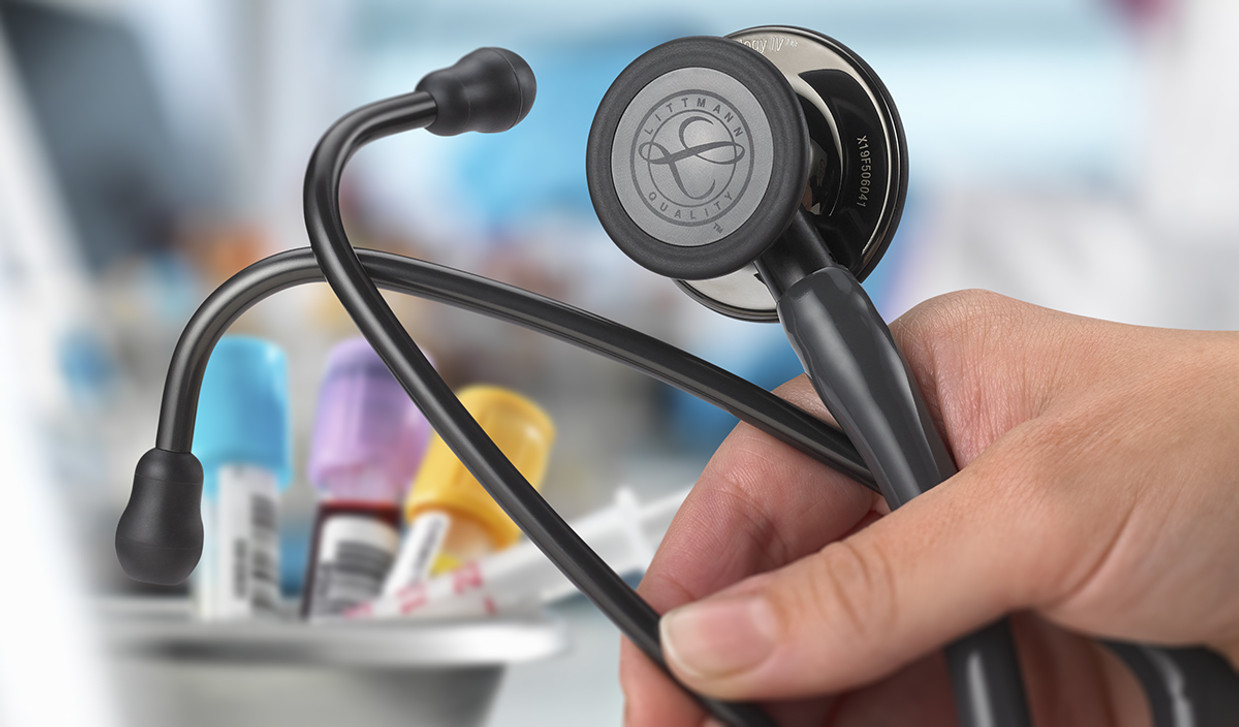We are often asked by customers what is the most effective way to clean their stethoscope. We wanted to share the following post written by Matthew M. Cooper, MD MBA FACS, Global Senior Medical Director & Director, Patient Safety C.O.E. which outlines best practices for cleaning your stethoscope.
“How do I clean my stethoscope?”
It’s a question we are asked frequently, and for good reason. Clinicians who care for patients want to help prevent the spread of germs.
To clean your 3M™ Littmann® stethoscope, use 70% isopropyl alcohol solution on a cloth or pre-packaged wipe, and wipe all patient contacting surfaces of your stethoscope between each assessment. Do not use hand sanitizer or wipes with multiple ingredients, as they may include other agents that could damage parts of the stethoscope.
As clinicians, we are taught to keep patients safe and do no harm. That starts by taking the right precautionary measures.
Just as we wash hands between each patient, clinicians should disinfect their stethoscopes after every patient assessment with a 70% isopropyl alcohol wipe1 to help reduce the risk of patient-to-patient cross contamination.
As clinicians wipe their stethoscope with alcohol, they are manually removing residue. This cleaning removes organic material, which, in the case of a stethoscope, could mean blood or secretions.
In addition, it’s a good idea to deep clean stethoscopes periodically to remove stubborn residue and keep stethoscopes in top condition. To do this, clinicians can remove eartips and remove tunable diaphragms from the chest piece – then, wipe parts with alcohol or wash with soapy water and dry thoroughly before reassembly.
It is important not to immerse the stethoscope in any liquid, subject it to a sterilization process, or expose it to extreme heat, cold, solvents or oils, because these could damage the stethoscope.
Of course, some patients may need to be treated with extra caution and care due to a condition where isolation precautions are recommended. According to the CDC, 1 in 25 patients contract an infection during their hospital stay.
Using a single-patient stethoscope is a recommended isolation precaution that eliminates the potential risk of patient-to-patient cross-contaminationthat can be introduced by reusable stethoscopes. A single-patient stethoscope should be used with patients under isolation precautions, stay in the patient’s room while the patient is in isolation, and be disposed of when no longer needed. 3M™ Single-Patient Stethoscopes come in adult and pediatric sizes with high-quality acoustics, so you can take necessary precautions and provide the same standard of care.
As clinicians, we want to take the right precautionary steps. It’s our job to sweat the small stuff. Seemingly simple routines, like cleaning our stethoscopes, can make a world of difference and together, we can help keep patients healthy and safe.
See cleaning tips for 3M™ Littmann® Stethoscopes here.

